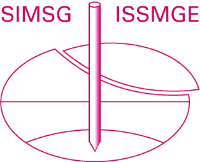For Contractors, Equipment Suppliers, Field Testing Companies, Laboratory Testing Labs, Material Manufacturers & Suppliers, Software providers and Consulting firms
Create Company PageFor Universities, Professional Associations and Research Organizations
Create Organization PageEdit your photo

Machine Learning and Big Data (TC309)
Members 568Technical Committee
Group Admins
| Admin |
|---|
| ISSMGE Administrator |
Description
Contact Information
Discussion Topic
| Title | Posted | Description | Replies | Latest Reply |
|---|---|---|---|---|
 ISSMGE Interactive Technical Talk Episode 9: Machine Learning and Big Data (TC309) ISSMGE Interactive Technical Talk Episode 9: Machine Learning and Big Data (TC309) |
07/09/2023 09:52 | The ninth episode of International Interactive Technical Talk has just been launched and is supported … | 0 | N/A |
 Technical Workshop on Landslide Warning and Prediction using IoT and Machine Learning Technical Workshop on Landslide Warning and Prediction using IoT and Machine Learning |
15/02/2023 08:42 | Joint Technical Workshop (WG8 LandAware & ISSMGE TC309) on Landslide Warning and Prediction using … | 0 | N/A |
 ISSMGE TC309 Technical Forum of Young Scholars on Data-driven Modelling of Soil Behaviours with Geotechnical Applications ISSMGE TC309 Technical Forum of Young Scholars on Data-driven Modelling of Soil Behaviours with Geotechnical Applications |
02/11/2022 02:42 | The Hong Kong Polytechnic University, in cooperation with ISSMGE TC309, organises a half day Technical… | 0 | N/A |
 Fifth TC309/TC304 Student Contest (groundwater time-series forecasting) Fifth TC309/TC304 Student Contest (groundwater time-series forecasting) |
03/05/2022 02:14 | The machine learning competition is organized as an event at the MLRA2021 (Machine Learning and Risk A… | 0 | N/A |
 Fifth TC309/TC304 Student Contest (groundwater time-series forecasting) Fifth TC309/TC304 Student Contest (groundwater time-series forecasting) |
03/05/2022 02:13 | The machine learning competition is organized as an event at the MLRA2021 (Machine Learning and Risk A… | 0 | N/A |
 Reference List for Machine Learning and its Applications in Geotechnical Engineering - PART IV: PERFORMANCE COMPARISON OF MACHINE LEARNING ALGORITHMS USING THE SAME DATASET Reference List for Machine Learning and its Applications in Geotechnical Engineering - PART IV: PERFORMANCE COMPARISON OF MACHINE LEARNING ALGORITHMS USING THE SAME DATASET |
29/04/2022 02:41 | 1 Performance comparison of ML algorithms 1.1 Landslide [1] Yao, X., Tham, L. G., and Dai, F. C… | 0 | N/A |
 Reference List for Machine Learning and its Applications in Geotechnical Engineering - PART III: APPLICATIONS IN GEOTECHNICAL ENGINEERING Reference List for Machine Learning and its Applications in Geotechnical Engineering - PART III: APPLICATIONS IN GEOTECHNICAL ENGINEERING |
29/04/2022 02:37 | 1 Artificial neural networks [1] Shahin, M. A., Jaksa, M. B., and… | 0 | N/A |
 Reference List for Machine Learning and its Applications in Geotechnical Engineering-PART II: MACHINE LEARNING ALGORITHMS Reference List for Machine Learning and its Applications in Geotechnical Engineering-PART II: MACHINE LEARNING ALGORITHMS |
29/04/2022 02:08 | 1 Supervised learning 1.1 Decision tree learning [1] Breiman, Leo, Friedman, J. H., O… | 0 | N/A |
 Reference List for Machine Learning and its Applications in Geotechnical Engineering - PART I: NEED TO KNOW KNOWLEDGE Reference List for Machine Learning and its Applications in Geotechnical Engineering - PART I: NEED TO KNOW KNOWLEDGE |
28/04/2022 13:47 | 1 Probability Theory [1] Jeffreys, H. (1983). Theory of Probability. Oxford University Press, Oxfor… | 0 | N/A |
 Reference List for Machine Learning and its Applications in Geotechnical Engineering - PART I: NEED TO KNOW KNOWLEDGE Reference List for Machine Learning and its Applications in Geotechnical Engineering - PART I: NEED TO KNOW KNOWLEDGE |
28/04/2022 13:39 | 1 Probability Theory [1] Jeffreys… | 0 | N/A |
 Reference List for Machine Learning and its Applications in Geotechnical Engineering Reference List for Machine Learning and its Applications in Geotechnical Engineering |
28/04/2022 13:02 | https://www.issmge.org/filemanager/article/1020/Reference_List_for_Machine_Learning_and_its_Applicatio… | 0 | N/A |
 Reference List for Machine Learning and its Applications in Geotechnical Engineering Reference List for Machine Learning and its Applications in Geotechnical Engineering |
28/04/2022 12:51 | A reference list of ML in various geotechnical applications | 0 | N/A |
 Reference List for Machine Learning and its Applications in Geotechnical Engineering Reference List for Machine Learning and its Applications in Geotechnical Engineering |
28/04/2022 12:49 | A reference list of ML in various geotechnical applications | 0 | N/A |
 TC309 Student Contest - Kaggle-contest TC309 Student Contest - Kaggle-contest |
01/10/2021 13:09 | MLRA2021 groundwater time-series forecasting Machine learning prediction event for the internationa… | 0 | N/A |
 TC304/TC309 student contests TC304/TC309 student contests |
23/04/2021 11:57 | Aug 7-9 2020, Chongqing University, China Participation form (download) Contest Question (… | 0 | N/A |
 TC304/TC309 student contests TC304/TC309 student contests |
23/04/2021 11:54 | Oct 4-7 2020, Tokyo, Japan Organizer: Andy YF Leung, Zijun Cao, Lei Wang, Takayuki Shuku Award C… | 0 | N/A |
 TC304/TC309 student contests TC304/TC309 student contests |
23/04/2021 11:51 | Sep 22 2019, Hannover, Germany Organizer: Giovanna Vessia, Wojciech Pula Award Committee: Jianye… | 0 | N/A |
 TC304/TC309 student contests TC304/TC309 student contests |
23/04/2021 11:43 | Aug 18 2018, Harbin Institute of Technology, China Organizer: Dagang Lv, Hongwei Huang, Jie Zhang … | 0 | N/A |
 ISFOG2020 Data science prediction event ISFOG2020 Data science prediction event |
01/06/2019 13:51 | In the run-up to the ISFOG 2020 conference (www.isfog2020.org), I'm pleased to announce a community-driven predictio… | 0 | N/A |
 Greetings to all members of the ISSGME TC309 Greetings to all members of the ISSGME TC309 |
18/02/2019 18:35 | Hi everybody, I am happy to be member this year 2019 of this TC309 committee. Hope we can all make advances in the ap… | 0 | N/A |
| Title | Actions |
|---|
